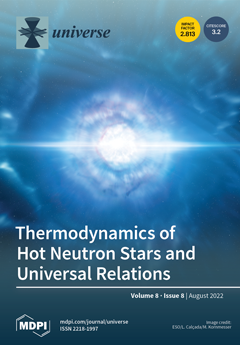Ultralight scalars with a typical mass of the order
eV and light scalars forming a Bose–Einstein condensate (BEC) exhibit a Jeans length in the kpc scale and were therefore proposed as dark matter (DM) candidates. Our treatment here
[...] Read more.
Ultralight scalars with a typical mass of the order
eV and light scalars forming a Bose–Einstein condensate (BEC) exhibit a Jeans length in the kpc scale and were therefore proposed as dark matter (DM) candidates. Our treatment here is generic, independent of the particle physics model and applies to all DM BEC, in both in or out of equilibrium situations. Two observed quantities crucially constrain DM in an inescapable way: the average DM density
and the phase-space density
Q. The observed values of
and
Q in galaxies today constrain both the possibility to form a BEC, and the DM mass
m. These two constraints robustly exclude the axion DM that decouples after inflation. Moreover, the value
eV can only be obtained with a number of ultrarelativistic degrees of freedom at decoupling in the trillions, which is impossible for decoupling in the radiation dominated era. In addition, we find for the axion vacuum misalignment scenario that axions are produced strongly out of thermal equilibrium and that the axion mass in such a scenario turns to be
17 orders of magnitude too large to reproduce the observed galactic structures. Moreover, we also consider inhomogenous gravitationally bounded BEC’s supported by the bosonic quantum pressure independently of any particular particle physics scenario. For a typical size
kpc and compact object masses
they remarkably lead to the same particle mass
eV as the BEC free-streaming length. However, the phase-space density for the gravitationally bounded BEC’s turns out to be more than
sixty orders of magnitude smaller than the galaxy-observed values. We conclude that the BEC cannot be the total DM. The axion can be candidates to be only part of the DM of the universe. Besides, an axion in the mili-eV scale may be a relevant source of dark energy through the zero point cosmological quantum fluctuations.
Full article





